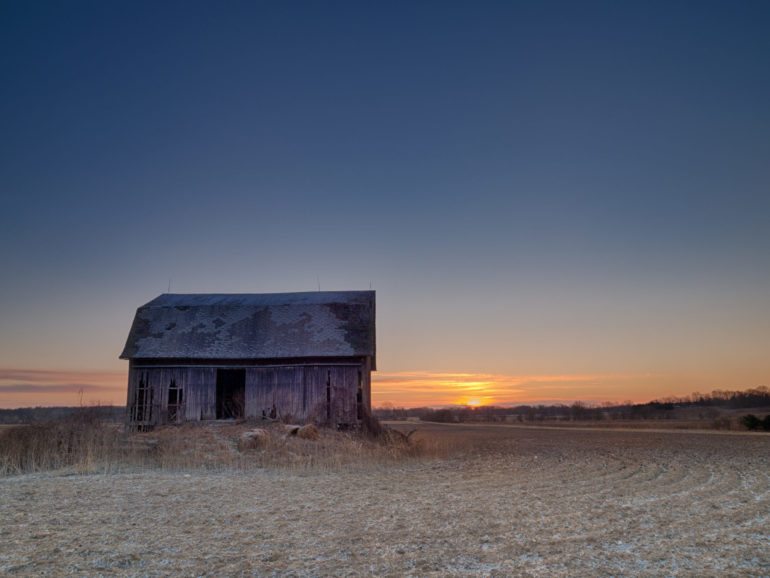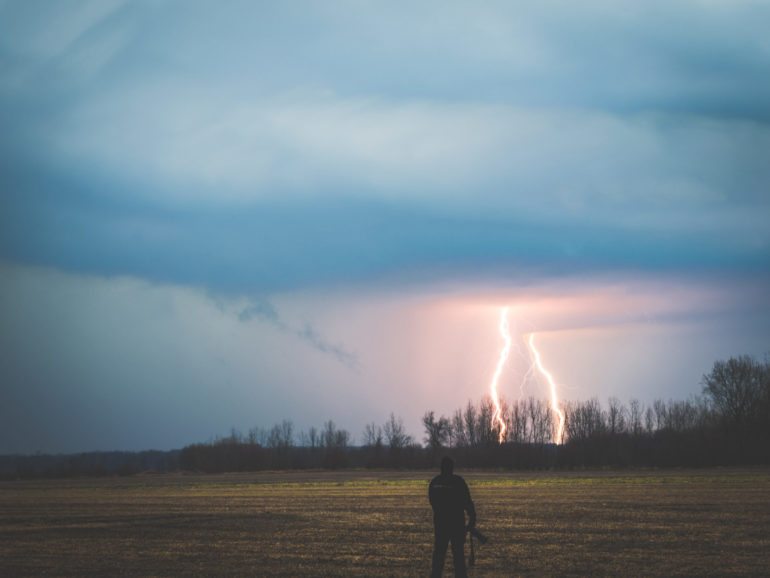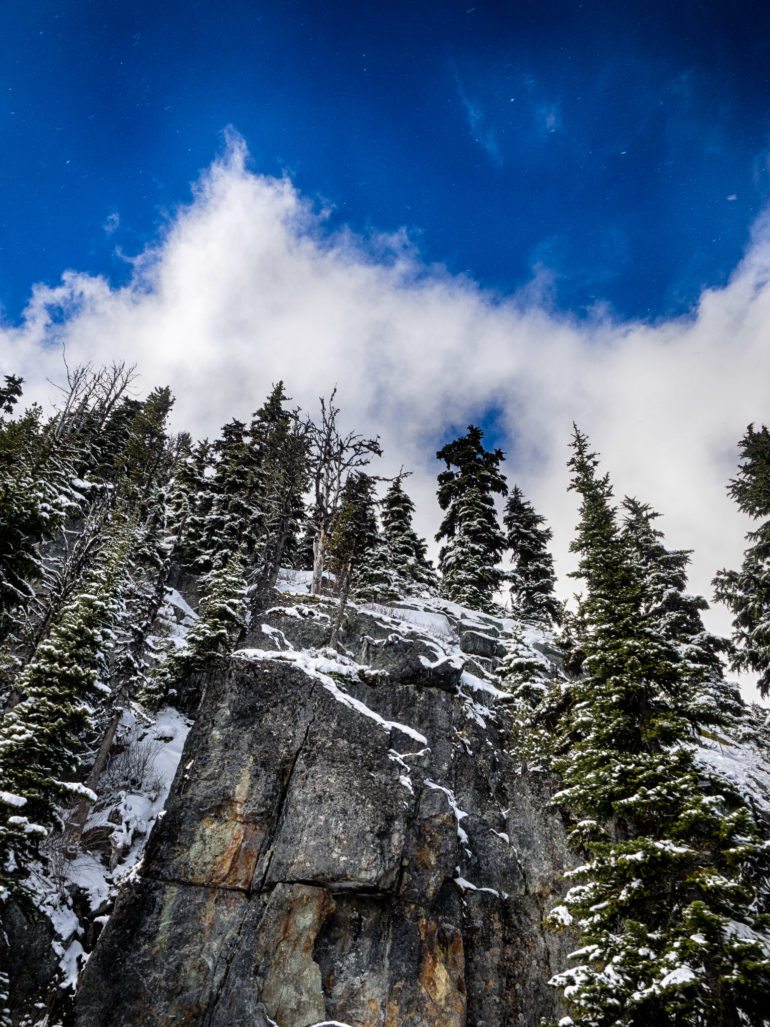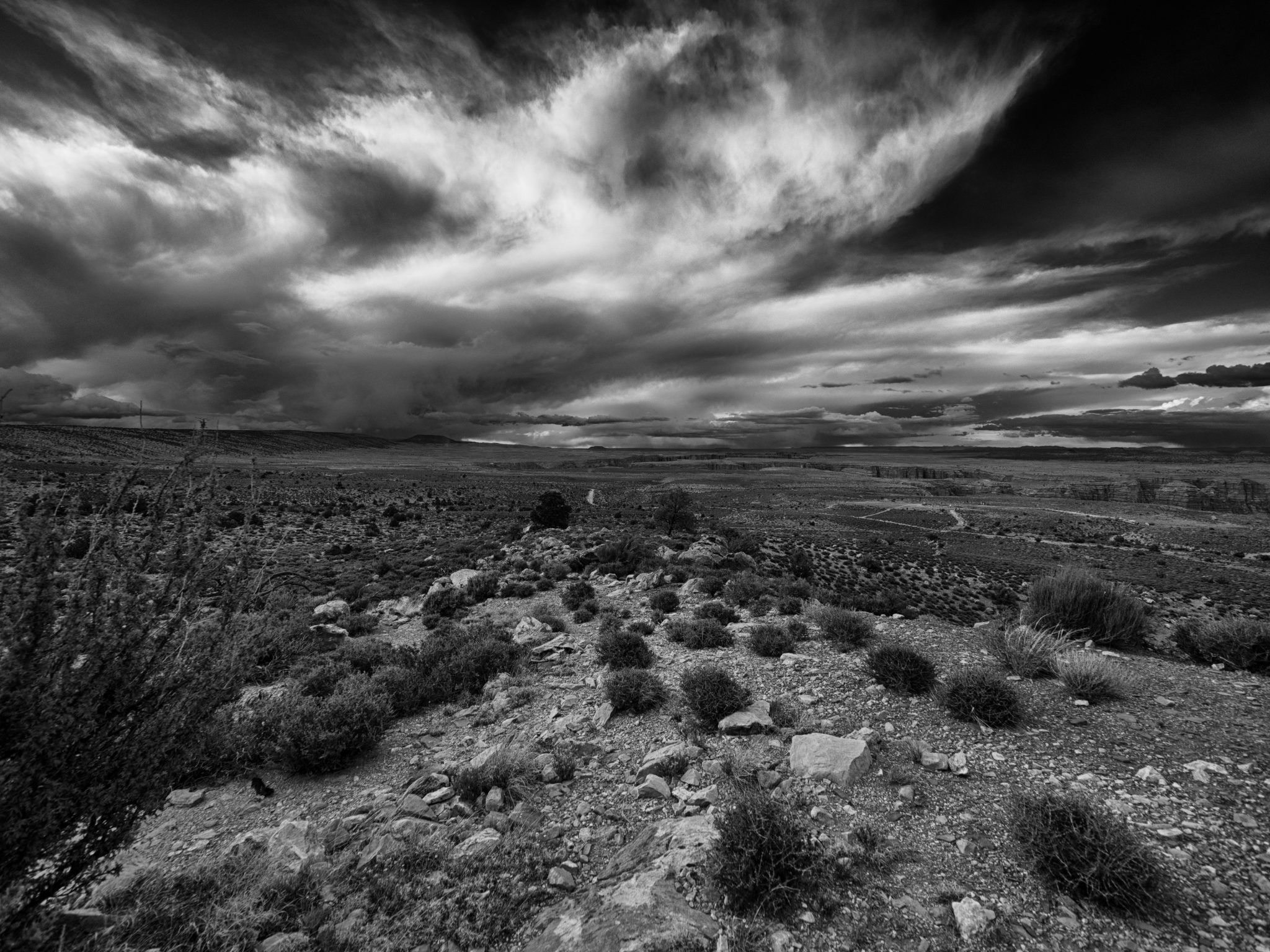I close my eyes. The air is cold, blanketing the ground in a light frost, causing harsh shivers that race down my spine. I hear birds in the distance screaming at one another in a cacophony of song and screech. The star-filled sky above me is a deep romantic blue. I take a deep breath. I can smell smoke from a campfire that was extinguished only hours ago. I slowly open my eyes. Along the eastern horizon I see a glow; faint, but growing.
As the glow brightens, my pulse quickens and I begin running numbers through my head: f/8, focus at 100 yards, ISO 200, 1/15th of a second. The sun breaks the horizon and now I start breathing slower as the photos start appearing on my LCD display. I make some slight adjustments to my settings as the scene, ever dynamic, changes in subtle ways. I am consumed by this moment, and then in an instant, I am finished.

Cold Sunrise at the Barn: E-M1 MkII + mZuiko 7-14mm f/2.8 PRO + NiSi 4 stop Reverse Grad ND Filter
Some chase serenity through meditation or yoga or prayer; I find my inner calm through photography.
How can creating photos be a meditative process? How can something as technical as photography be soothing?
I will start by saying that this has not always been easy for me—finding inner peace while shooting. In fact, when I first started shooting, it was quite the opposite. Up until about two years ago, my photography had always felt rushed as I focused on the act of pushing the shutter button to see quick results.
But something inside me has changed in the past year, likely a result of my realization during my wife’s battle with breast cancer that life is finite and fleeting. I’ve learned that life is short and beautiful and therefore needs to be photographed and lived in at the same time.
“I settle on a location, hopefully early enough to get to my position where I will shoot from, and just stand there, close my eyes and listen. I attempt to take in all aspects of the environment. I listen for the breeze rustling the tall grasses, birds singing, maybe a dog barking or even the sound of a distant jet flying above me. These sounds anchor me in my location.”
The opening paragraph of this entry describes the morning scene on Sunday, February 26th 2017 in the countryside of Eaton County, Michigan. The description I provided outlines a typical sunrise shoot for me.
I settle on a location, hopefully early enough to get to my position where I will shoot from, and just stand there, close my eyes and listen. I attempt to take in all aspects of the environment. I listen for the breeze rustling the tall grasses, birds singing, maybe a dog barking or even the sound of a distant jet flying above me. These sounds anchor me in my location. With my eyes still shut, I breathe in the air and become aware of the smells; damp grass, the earthy smell of fresh tilled soil. I feel for the wind on my skin, sometimes cold and dry or at other times warm and humid. It’s important for me to anchor myself in my location to really connect to the moment I am going to photograph.
The last sense I tap into is my sight. After I have become immersed in the sensations of my other senses, I open my eyes and begin setting up my camera. At this point, when it’s necessary to operate in a technical manner, is when many people will become distracted from the moment—too wrapped up in the settings that they start losing track of their environment.
This is where another form of connection can help: your camera choice.
I shoot with the Olympus OM-D line of cameras, and having used them since they were first introduced, I know them inside and out. The body fits in my hands perfectly and allows me to reach every button and dial without having to take my eyes off the scene to make adjustments. Since I know every curve of my camera, every subtle rise of each button, the process of making adjustments is now a part of my immersion into the scene. As I survey the landscape and swivel my camera on the tripod to compose my shot, I am running my fingers across the camera to adjust shutter speed, aperture, or exposure compensation. It all becomes a fluid process. It all becomes ritual.
Now while this is an ideal way to shoot, to be so zen while shooting, it doesn’t always happen this way. There are times when adrenaline takes over and emotions are ruled by excitement and not by the need for reflection and some sort of inner peace.

Bolted in Color: E-M1 MkII + mZuiko 12-100mm f/4 PRO
The image above is a prime example of that. Fast moving thunderstorms producing lots of cloud to ground lightning leave me charging across the state in search of an opportunity to get this photo. The zen moment here was definitely after the image was created and I could spend time reflecting on the experience.
So how do you adopt this way of shooting? What steps did I take to become a zen photographer? For me, it began while on a trip to Whistler British Columbia with Olympus. B.C, and specifically Whistler, had been on my wish list of places to visit since I started snowboarding in high school. When my role as an Olympus Trailblazer granted me to the opportunity to visit such an incredible place, I was overwhelmed with emotion at the beauty of the landscape. I found myself standing with my camera in my hand just taking it all in, and not shooting. I was so wrapped up in the sights, sounds and smells that I was forgetting to shoot! So I decided to allow myself to be in the moment, but do it in a way that
I was also capturing images.

Jagged Blue: E-M1 + mZuiko 12-40mm f/2.8 PRO
I found that if I paused to take in everything outside the viewfinder first, I became more aware of the scene, and I ended up composing better, exposing better, and most importantly to me, remembering it all better. When I am old and grey, I want to remember these opportunities without having to be shown a photo to recall them.
“I found myself standing with my camera in my hand just taking it all in, and not shooting.”
So what are you going to do now? I hope that you write back and say that you spent some time out in the world soaking it all up for yourself, for your future self, before pressing the shutter button.
Take care, and enjoy your photo meditations.
Jamie A. MacDonald
Olympus Trailblazer and Vanguard Professional.


